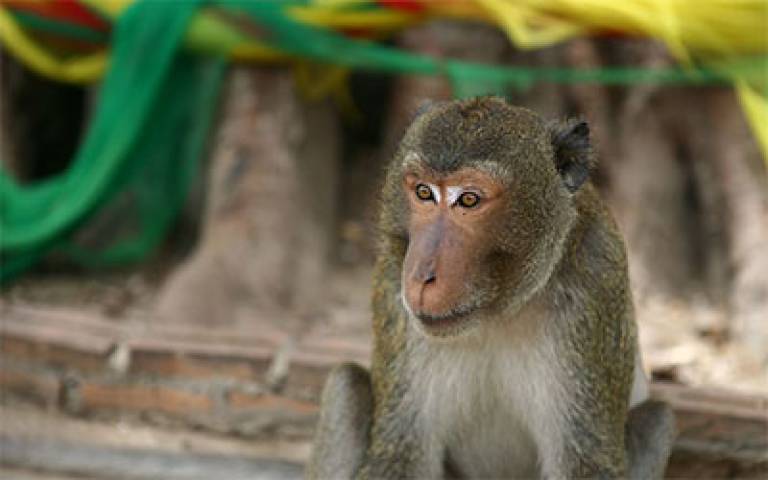Macaques' stone tool use developed differently despite shared environment
5 November 2019
A new collaborative study, involving Tomos Proffitt (UCL Institute of Archaeology), indicates that stone tool use developed differently within species of Old World monkeys in spite of shared environmental and ecological settings.

Stone tools in the prehistoric record are the most abundant source of evidence for understanding early hominin technological and cultural variation. The field of primate archaeology is well placed to improve our scientific knowledge by using the tool behaviours of living primates as models to test hypotheses related to the adoption of tools by early stone-age hominins.
Macaques are the only Old World monkeys that have been observed using percussive stone tools and scientists do not know for certain how or why certain groups have developed this behaviour. This behaviour is mainly observed in long-tailed macaque populations that live along the ocean shores of southern Thailand and Myanmar where they use tools primarily to prey on shellfish, including oysters, crabs and mussels.
In this new study, published in eLife journal, and involving researchers from the University of Oxford, Oxford Brookes University, Max Planck Institute for Evolutionary Anthropology, Chulalongkorn University, Bangkok and the National Primate Research Centre of Thailand, as well as UCL, data on wild long-tailed macaques living in two islands (Boi Yai Island and Lobi Bay) about 15 kilometres apart in southern Thailand, within the Ao Phang Nga National Park were analysed.
The researchers assessed 115 stone tools from both locations. They found that despite living in the same environment, with access to the same stone tool making resources and the same prey species, wild long-tailed macaques on Boi Yai Island selected heavier tools than those on Lobi Bay.
According to Tomos Proffitt:
- “We observed differences among macaques on two different islands, in relation to tool selection and the degree of tool re-use when foraging for marine prey. The theory is that if the environmental factors are the same – the only reasonable conclusion is that one island has developed its own tool using culture either through genetics or through passing down through a learning mechanism, while the other group exhibits a tool use culture which is more ephemeral and ad hoc.”
The study, funded by the Leverhulme Trust, British Academy and by the German Primate Centre in Goettingen, Germany, indicates that evidence of material culture can differ within the same timeframe at local geographic scales and in spite of shared environmental and ecological settings.
 Close
Close

